#history of mahabharata
Explore tagged Tumblr posts
Text
In addition to my Monkey Man post from earlier, the always kind & sweet Aparna Verma (author of The Phoenix King, check it out) asked that I do a thread on Hijras, & more of the history around them, South Asia, mythology (because that's my thing), & the positive inclusion of them in Monkey Man which I brought up in my gushing review.
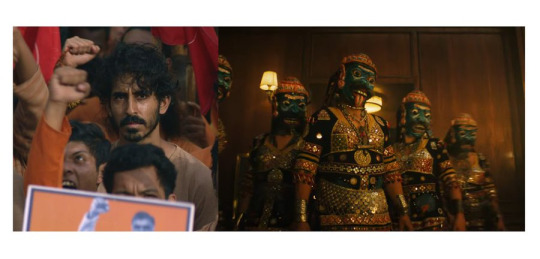
Hijra: They are the transgender, eunuch, or intersex people in India who are officially recognized as the third sex throughout most countries in the Indian subcontinent. The trans community and history in India goes back a long way as being documented and officially recognized - far back as 12th century under the Delhi Sultanate in government records, and further back in our stories in Hinduism. The word itself is a Hindi word that's been roughly translated into English as "eunuch" commonly but it's not exactly accurate.
Hijras have been considered the third sex back in our ancient stories, and by 2014 got official recognition to identify as the third gender (neither male or female) legally. Pakistan, Nepal, Bangladesh, and India have accepted: eunuch, trans, intersex people & granted them the proper identification options on passports and other government official documents.
But let's get into some of the history surrounding the Hijra community (which for the longest time has been nomadic, and a part of India's long, rich, and sometimes, sadly, troubled history of nomadic tribes/people who have suffered a lot over the ages. Hijras and intersex people are mentioned as far back as in the Kama Sutra, as well as in the early writings of Manu Smriti in the 1st century CE (Common Era), specifically said that a third sex can exist if possessing equal male and female seed.
This concept of balancing male/female energies, seed, and halves is seen in two places in South Asian mythos/culture and connected to the Hijra history.
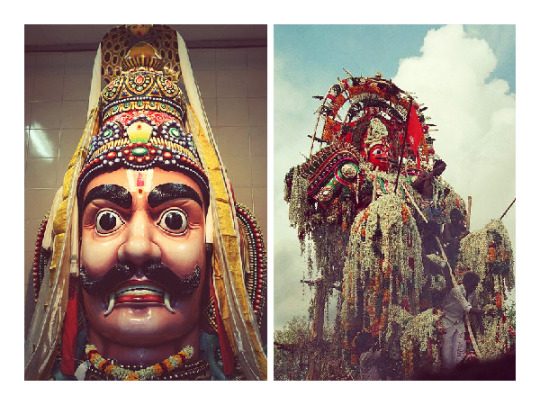
First, we have Aravan/Iravan (romanized) - who is also the patron deity of the transgender community. He is most commonly seen as a minor/village deity and is depicted in the Indian epic Mahabharata. Aravan is portrayed as having a heroic in the story and his self-sacrifice to the goddess Kali earns him a boon.
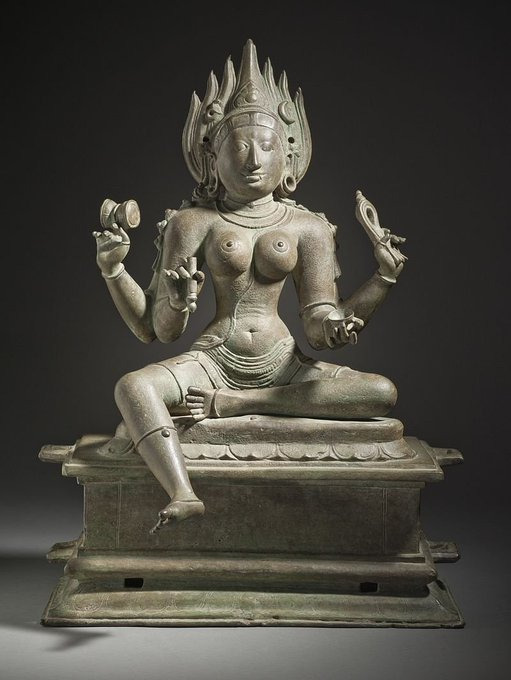
He requests to be married before his death. But because he is doomed to die so shortly after marriage, no one wants to marry him.
No one except Krishna, who adopts his female form Mohini (one of the legendary temptresses in mythology I've written about before) and marries him. It is through this union of male, and male presenting as female in the female form of Mohini that the seed of the Hijras is said to begun, and why the transgender community often worships Aravan and, another name for the community is Aravani - of/from Aravan.
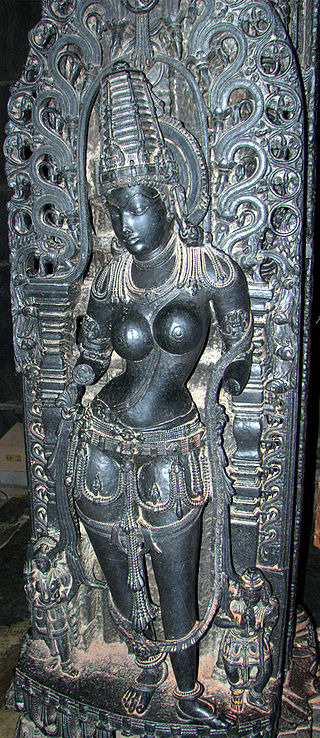
But that's not the only place where a gender non conforming divine representation can be seen. Ardhanarishvara is the half female form of lord Shiva, the destroyer god.
Shiva combines with his consort Parvarti and creates a form that represents the balancing/union between male/female energies and physically as a perfectly split down the middle half-male half-female being. This duality in nature has long been part of South Asian culture, spiritual and philosophical beliefs, and it must be noted the sexuality/gender has often been displayed as fluid in South Asian epics and the stories. It's nothing new.

Many celestial or cosmic level beings have expressed this, and defied modern western limiting beliefs on the ideas of these themes/possibilities/forms of existence.
Ardhanarishvara signifies "totality that lies beyond duality", "bi-unity of male and female in God" and "the bisexuality and therefore the non-duality" of the Supreme Being.
Back to the Hijra community.
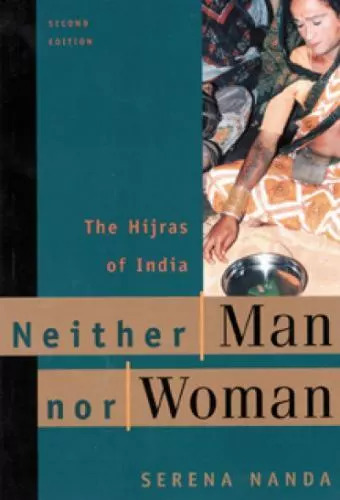
They have a complex and long history. Throughout time, and as commented on in the movie, Monkey Man, the Hijra community has faced ostracization, but also been incorporated into mainstream society there. During the time of the Dehli Sultanate and then later the Mughal Empire, Hijras actually served in the military and as military commanders in some records, they were also servants for wealthy households, manual laborers, political guardians, and it was seen as wise to put women under the protection of Hijras -- they often specifically served as the bodyguards and overseers of harems. A princess might be appointed a Hijra warrior to guard her.
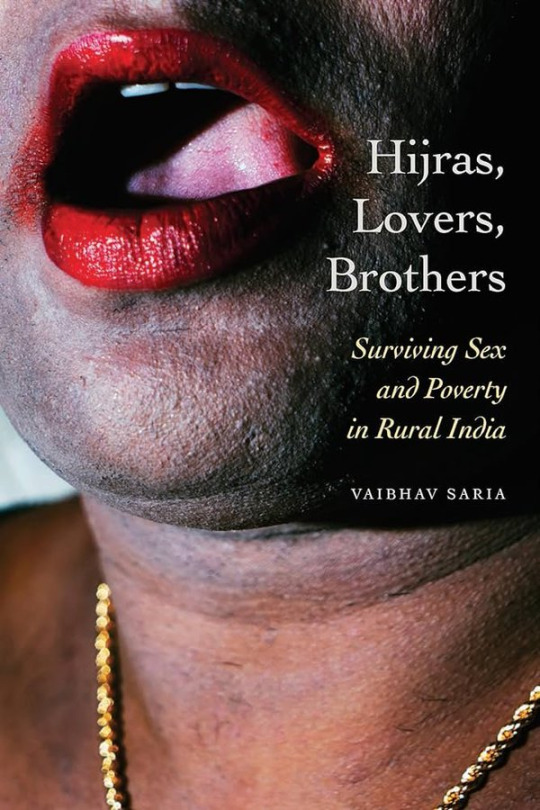
But by the time of British colonialism, anti-Hijra laws began to come in place folded into laws against the many nomadic tribes of India (also shown in part in Monkey Man with Kid (portrayed by Dev Patel) and his family, who are possibly
one of those nomadic tribes that participated in early theater - sadly by caste often treated horribly and relegated to only the performing arts to make money (this is a guess based on the village play they were performing as no other details were given about his family).
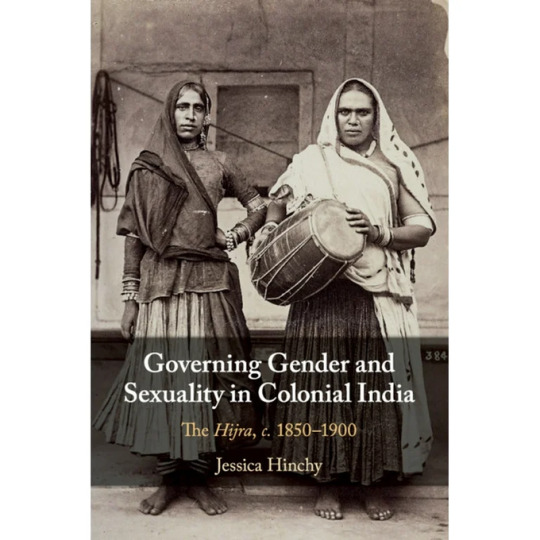
Hijras were criminalized in 1861 by the Indian Penal Code enforced by the British and were labeled specifically as "The Hijra Problem" -- leading to an anti-Hijra campaign across the subcontinent with following laws being enacted: punishing the practices of the Hijra community, and outlawing castration (something many Hijra did to themselves). Though, it should be noted many of the laws were rarely enforced by local Indian officials/officers. But, the British made a point to further the laws against them by later adding the Criminal Tribes Act in 1871, which targeted the Hijra community along with the other nomadic Indian tribes - it subjected them to registration, tracking/monitoring, stripping them of children, and their ability to sequester themselves in their nomadic lifestyle away from the British Colonial Rule.
Today, things have changed and Hijras are being seen once again in a more positive light (though not always and this is something Monkey Man balances by what's happened to the community in a few scenes, and the heroic return/scene with Dev and his warriors). All-hijra communities exist and sort of mirror the western concept of "found families" where they are safe haven/welcoming place trans folks and those identifying as intersex.
These communities also have their own secret language known as Hijra Farsi, which is loosely based on Hindi, but consists of a unique vocabulary of at least 1,000 words.
As noted above, in 2014, the trans community received more legal rights.
Specifically: In April 2014, Justice K. S. Radhakrishnan declared transgender to be the third gender in Indian law in National Legal Services Authority v. Union of India.
Hijras, Eunuchs, apart from binary gender, be treated as "third gender" for the purpose of safeguarding their rights under Part III of our Constitution and the laws made by the Parliament and the State Legislature. Transgender persons' right to decide their self-identified gender is also upheld and the Centre and State Governments are directed to grant legal recognition of their gender identity such as male, female or as third gender.
I've included some screenshots of (some, not all, and certainly not the only/definitive reads) books people can check out about SOME of the history. Not all again. This goes back ages and even our celestial beings/creatures have/do display gender non conforming ways.
There are also films that touch on Hijra history and life. But in regards to Monkey Man, which is what started this thread particularly and being asked to comment - it is a film that positively portrayed India's third sex and normalized it in its depiction. Kid the protagonist encounters a found family of Hijras at one point in the story (no spoilers for plot) and his interactions/acceptance, living with them is just normal. There's no explaining, justifying, anything to/for the audience. It simply is. And, it's a beautiful arc of the story of Kid finding himself in their care/company.
#hijra#trans representation#monkey man#dev patel#transgender#trans rights#trans rights are human rights#third sex#indian history#indian culture#colonialism#imperialism#south Asian mythos#South Asian myths#Aravan#Iravan#Mahabharata#hindu mythology#hindu gods#kali goddess#krishna#hindu mythology art#Ardhanarishvara#Shiva#Parvarti#sexuality#gender fluid#fluid sexuality#trans community#transgender rights
817 notes
·
View notes
Text

like seriously….. I am tired of this same theme
#desiblr#desi tumblr#desi teen#desi shit posting#desi tag#desi#desi academia#desi core#hindublr#sam shitposting again#chhatrapati sambhaji maharaj#sambhaji#mahabharat#incorrect mahabharat quotes#mahabharata#mahabharat memes#mughal memes#mughals#orangeseb#orange seb#orangzeb#indian history
134 notes
·
View notes
Text
It's okay Arjun i too question the necessity of doing my job when I'm just about to start doing it-
#desi tumblr#desiblr#mahabharata#arjuna#krishna#dark academia#chaotic academia#hinduism#hindu history#mahabharat memes
500 notes
·
View notes
Text
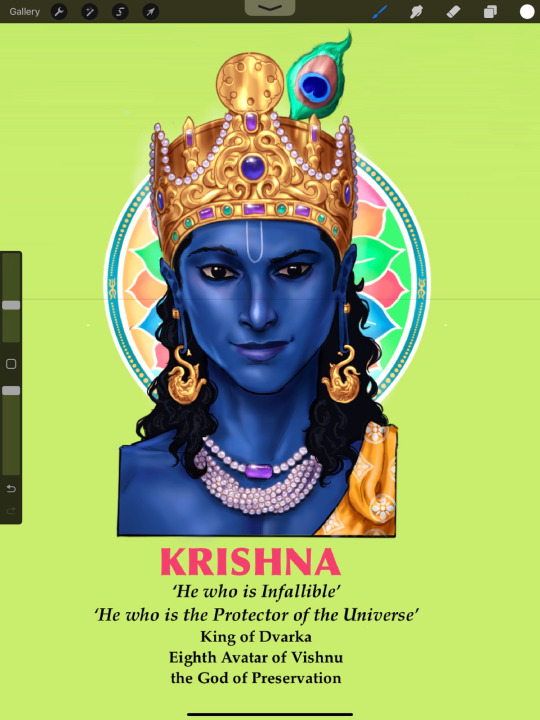
One of the most important figures in the Mahabharata and Hinduism as a whole finally makes his entrance!
#illustration#art#artwork#digital art#mythology#character art#character design#ancient world#ancient history#ancient india#mahabharata#mahabharat#hinduism#hindublr#hindu mythology#desi tumblr#desi tag#krishna#lord krishna#bhagavad gita#bhagwad gita#arjuna
89 notes
·
View notes
Note
I see so many hindutva wadis arguing that caste system is a foreign concept and hinduism only had the varna system. As if the varna system was fair? Also isn't caste derived from the varna system? Like brahmins and Kshatriyas became upper castes, vaishyas became obc and shudra were dalits?
I had the impression that the caste system was the documentation of people who already belonged to the varna system. Do correct me if I'm wrong.
It's a little more complicated than that. Currently, we live under the jaati(or jāti) system broadly speaking. When people talk about the caste system in modern India, it is this system superimposed on the varna system that they are referring to. Functionally, the caste system now is a hybrid of the two systems.
The Varna system and the Jaati System are both systems of social hierarchy.
As everyone is already aware, under the varna system, the society is divided into four categories(i.e. brahmins, kshatriyas, vaishyas and shudras) which are hierarchical in nature and mentioned in the various ancient religious texts. Crucially important to this system is the existence of a fifth category, the untouchables(I assume you're already aware of the practice of untouchability) and the outsiders(often termed as "mlechhas", which is now a derogatory xenophobic{and casteist!} slur coming back into popular use thanks to the resurgence of regressive ideas under hindutva politics). These are important to mention because the marginalization of these people was based on them being an out-group i.e. not part of the varna system. People claim the varnas were mutable based on a handful of examples in said texts but I would like to point out that those examples are said to be exceptions rather than the rule.
The Jaati System would be more familiar to you in terms of lived experience. Under this system, society is divided into socio-ethnic endogamous groups or communities and each of the groups have different socio-economic standing in society. The practice of endogamy(marriage limited to within a social group) is important to this system as there is emphasis on one's birth. This is why people say that intermarriage is the most significant step towards dismantling the entire system, but I digress. Prior to the colonization of India, these groups worked on a purely social basis of privilege and exclusion. Villages and cities were(and still are!) segregated based on these jatis. One's occupation was defined by their birth as long as they lived in their specific society.
I would like to emphasize that this system existed and thrived even before the colonisers ever came knocking on the subcontinent's doors. We can find mentions of the system in the historical accounts of both people of the subcontinent and travellers from outside. A study of people's DNA by some scholars claims that the endogamous groups can be traced back to as far as the Gupta Empire(mid 3rd century to mid 6th century CE).
The assertion that the caste system is a purely colonial fabrication is absurd. People point to the term "caste" as being of foreign origin but the term "jaati" already existed and was in use. "Caste" is just another way of referring to jaatis.
Now on to some legitimacy hidden in the nonsensical claims, in the 1901 census of the subcontinent, the British bureaucracy fit the various jatis under the broad classification of the four varnas. It was not a clean fit, leaving many in an awkward position of having been classified wrongly. This is their fault. Not the construction of the system but rather the wrongful categorisation of it.
Officially, there are over 3,000 castes and 25,000 sub-castes in India. Take these numbers with a grain of salt because there are many unregistered castes and sub-castes to this day fighting their own battles of legal recognition.
The castes do not cleanly map onto the varnas. There are many castes who are in the upper strata of the hierarchy in one region and the lower strata in different regions. The system is incredibly nuanced and complex and our current legal systems have not caught up to the sophistication required to deal with it because of the people in power's adamant insistence of ignoring the system simply because they profit off of the oppression of others.
I don't want to add to the miscategorization but I feel like I should correct you on the fact that broadly speaking shudras are classified more under OBCs. (Please keep in mind that this not a clear category and there can be some castes who are said to be shudra who can be other categories as well.) There's much to be said about that because there's no distinction made between the land owner castes and the landless castes. And no, the creamy layer is not a good marker either.
There are some castes(1,108 of them to be exact) who were listed as scheduled castes(SC) in the Constitution of India for affirmative action. This was done to socially reform the country and help those in the marginalized sections of society to gain social mobility. The hope was to remove caste discrimination. As we know, it wasn't successful because caste discrimination still exists and caste based violence is on the rise again.
The term dalit is a contemporary word for the untouchable castes who were and are subjected to despicable discrimination in society.
The reason that I say that we now function under a hybrid of the two systems is that the superimposition of the varna system over the jaati system has been accepted and in many cases, embraced by the people now. You will find many a "upper caste" people proudly flaunting their Brahmin or kshatriya identities. The varna system is now interlinked with the jaati or the caste system whether we like it or not.
The system is complicated and fucked. We should get rid of it, guys. And with your help, you can make that dream a reality.
-Mod S
#caste system#anti caste#history mention#india#desiblr#hindublr#indian history#indpol#not an incorrect quote#long post#i know but things had to be said#incorrect mahabharata quotes#asks#ask reply#mod replies#i'm tired#mod s is always tired#mod: s
49 notes
·
View notes
Text
OMFG GUYS YOU ALL WON'T BELIEVE ONE OF THE SUGGESTED TOPICS FOR OUR HISTORY PROJECTS IS MAHABHARAT
I AM 100000% GONNA DO THAT
NOT EVEN LOOKING AT OTHER TOPICS EHSHDHDGDBDH
AJAJDHDHDHDHDGDVDV I AM SO EXCITED ALREADY SJDJDHDHDDB
43 notes
·
View notes
Text
KRISHNA IN VYAS MAHABHARAT AND THE POWER OF DUTY AND CHOICE (I)
Krishna in Vyaas Mahabharat
Trust me, I had seen Krishna's representation in TV serials and fictional books, but I always felt that something was missing. I understand the grand scale of Krishna, the all knowing Krishna, the mischief maker Krishna, the Dwarkadheesh Krishna, but I could hardly find nuances in the portrayal or how he exactly intertwines his roles together as one. In many instances, I feel like I am seeing actually different persons rather than entirely one. It should be one man enacting different activities, but somehow I felt fictions and serials cannot capture it well enough.
This is when I started reading Bori Ce, and oh man the way I was completely blown off by his portrayal! This is exactly what I had imagined Krishna to be! The all in one man showing all the nuances with perfect balance, not underdoing or overdoing it!
This man openly shows affection, anger, patience, courage and what not and has a strong command, a personality, a confidence in his stance that he has immensely knowledgeable and knows what is right and wrong.
KRISHNA IN MAHABHARAT IS AN ENTIRE PERSONALITY IN ITSELF.
There isn't a stiffness to his character which I always feel is shown, or the general notion of him being always in a mischievous mood throughout, nor he is the one who would always be ready to throw heavy "gyaan" in your way, everytime someone is upset.
1. Krishna, fitting in Mahabharat as a human and as a God: [ Krishna feels you, he gets you what you feel ] :
Krishna in Mahabharat, actually behaves like a person does as per required in a situation. He actually feels like a separate individual dealing with problems, fighting through it like anyone of us. Him being God, doesn't actually draw him from the fact that he will do a task with his command or Maya. Rather he takes up a situation, understands it and does his best to work upon it.
And you find him in a range of emotions while dealing with a situation.
For example, after the Dyut, he goes to meet Pandavas and Draupadi. The texts actually show how much he was shivering with anger, so much so that the forest seems like being caught in a storm, the sky in tremors and the earth is shaking. At that moment, his anger was disastrous. He was angry, very angry and he shows it. This is when Arjun comes, falls at his feet and recounts Krishna's past and cools him down. And Krishna gets very emotional at this.
Imagine you're very angry, and someone comes and says words of calmness and you melt almost immediately, and reciprocate their affection. That's exactly what Krishna does. He could've shown his superiority, could've destroyed the surroundings around just because he's God and knew that Dyut was unrighteous that happened. But he doesn't. He calms down and shows affection to Arjun by reciprocating how much he loved him and considered him is own. Such a contrasting set of emotions shown so well, unlike how we see Krishna not giving a damn about the Pandavas and running straight towards Draupadi. This was not him. He was angry, but was never so much that would overpower everything. He sees the Pandavas distraught and he actually comforts them.
He goes to Draupadi next and is heartbroken at her condition. Yes, Draupadi openly complains to him about what had happened and weeps. And unlike how we think or had seen Krishna giving a series of speeches of how "world does things to the one who is right, you should be strong Sakhi, rise up" he doesn't do any of it. Because he understood what Draupadi needed was a burst out of her grief, and some comfort. Krishna does the same, he infact goes on to say that fie upon Arjun and Bheem, the strength of Pandavas, and how all the Kauravas will be vanquished. He asks her to stop shedding tears and that the Kaurav women will shed more tears than her.
This is when guys, this is when I felt him. He actually acted like anyone of us who will comfort someone who is distressed, to an extent he/she would go on to support their stance, instead of asking to forget about it or be strong instead. No. Krishna wanted her to lament it fully and not store it up within her or forget about it. Krishna never asks to try to forget whatever happened. He knew what exactly Draupadi wanted that time, and let's her be. The grief stricken Draupadi who only wanted to pour her heart out. He comforts her after listening to her stance and anger completely. He's moved by her grief and reciprocates her anger by saying they'll pay for their sins and he'll make sure of that. And this is actually what a response should be, or we give to someone near and dear one who's been hurt or done unjust. He exactly acts like US.
But he was God. According to our thinking, He could've said to her that why are you crying? Be strong, have faith and all that....but Krishna doesn't. This is where the nuance of him being a human and a God is bridged.
It's not over yet. Krishna openly says, how he should've been during the Dyut physically, but he couldn't because of a war. He feels upset that he couldn't be there.
This again adds up to the emotional range of Krishna, that doesn't generally reduce him to an all knowing God who is detached from the world.
BUT HE ACTUALLY IS. HIM BEING GOD ACTUALLY DETACHES HIM FROM WORLDLY EMOTIONS! HE SHOULD BE DETACHED FROM MATERIALISM AND THAT HE IS!
And that is actually the beauty of his amalgamation of him being Godly and humanly at the same time! He isn't emotionally detached from anyone, he's completely involved in each emotion but to an extent it is required. What you call it as a balance of it. You see both angles together in his character subtly, not overpowering each other but coming together as a whole to make him KRISHNA.
Krishna follows the way how a human should work, he is that's why for a reason is called the ULTIMATE MAN.
It's not for his physical strength or power, but also because of a PERFECT blend of emotions he displays, akin to a man and teaches us how exactly should it be.
This is where Krishna appears like a whole character and doesn't appear subtly flat with a single dimension of a God. You know he knows, he knows you know that he knows, but still....that emotional strike you will get while reading about him from Vyas Mahabharat will give you that feeling in your guts. It will just make you feel closer to him
[ TO BE CONTINUED ]
#krishnablr#krishna#mahabharata#arjun#star plus mahabharat#writers#borice#authors#bookish#booklr#hindublr#history#india#draupadi
32 notes
·
View notes
Text
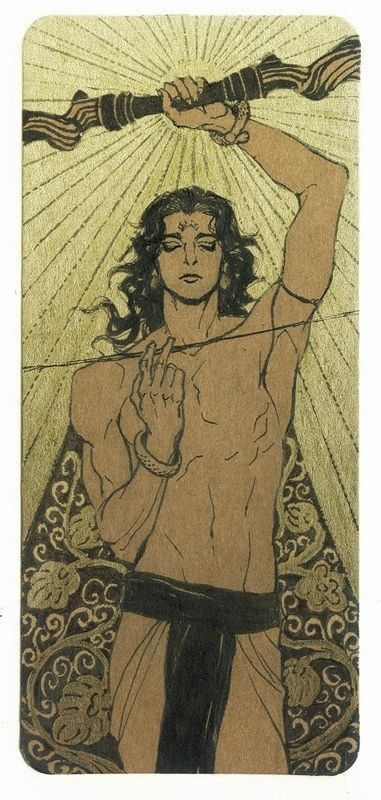
Karna
#desiblr#hindublr#hinduism#hindu art#hindu mythology#indian#krishna#art#mahabhart#karna#sun#mahabharata#history
85 notes
·
View notes
Text

Have a mahabharat meme
Rights to me or whatever idk how to claim and shitz
#gopiblr#kanhaiya#kanha#desi stuff#krishna#krishna is the best#krishnablr#spotify#hindu mythology#mahabharat memes#mahabharata#desi history#arjuna#arjun is me
322 notes
·
View notes
Text
I NEED mahabharata fan fictions man
Like proper ones.
#indian#mythology#hindu mythology#history#desiblr#tumblr#desi tumblr#incorrect mahabharat quotes#mahabharata#fanfiction
84 notes
·
View notes
Text
Bhats (not to be confused with the surname) - the bards of India.

Who are they? What are they? And what do they?
Well, simply put, they are/were storytellers -- the bards of South Asia.
They have also served as mythographers. What is a mythographer?
Think Snorri Sturluson or Ovid.
They will collect, translate, tell, or write collections of mythic stories that carry historical importance, pass it on, share it, perform.
As the valuation and societal weight of/on castes grew, eventually bards/Bhats were split into two sorts: An upper class and lower class in whom they served.
The wealthy, higher castes had their own bhats that served in many respects for a modern western comp. like the Maesters out of game of thrones. They would tell stories tied to and recite genealogy - family history as well as educational stories, and even perform storied eulogies for the passing of family members in wealthy families. The lower class bhats would do genealogy for patrons as well as a focus more on entertainment but not necessarily education (though you can argue that because stories are educational.
Unfortunately, this division and status worsened with time with sort of an upper class privileged bard/bhat that performed praise songs, story-tellers, and revered poets, vs the lower class "puppeteers or mummers telling folk tales only" -- considered riffraff.
The upper class of bards especially served Rajput families in ensuring glory, recognition, histories of their families deeds/goodness, birth, impeccable genealogy, all of which of course was used to continue to hold on to or grow political appeal/legitimacy and social status.
At times, bhats, along with monks (particularly of Jainistic backgrounds), and those of the Hindu Brahmin caste would compete in storytelling to mold/shape perception of tales among the royalty and those they wished to convince of certain ways of thinking by telling alternative histories or tales of family lines/kings past, and deeds done by them, and the kingdoms themselves.
Note: THEY DID NOT tell alternative versions of the epics/myths.
Now, that has happened through time and travel. There are alternative/localized versions of the South Asian myths and epics in many regions and other Asian countries due to travel and time - mostly carried through by Buddhism and its spread. This includes variations in Ramayama and Mahabharata in places.
But the Bhats, pandits, Brahmins, and other forms of storytellers/priests, sages, wise ones, did not by and large contribute to that. Not at least in the example and history here which is being relegated to their performance/duties for royal families, and then public with the lower class of bhats, who sadly continued to suffer as well as the upper class with British Raj which stripped many of their honor and status and left most historical families of storytellers by caste impoverished and these are just some light notes on one part of India's diverse and rich layered storytelling history and people who did it.
This part of the world had stories told by priests, sages, poets, bards, courtesans, and more.
It's home to so many styles and structures of storytelling (I did a primer on those a while back) unique to it and some that went on to spur/inspire structures used onward.
#Bhats#bards#brahmin#pandit#storytellers#storytelling#storytelling history#oral histories#Snorri Sturluson#Mythographer#myths#myths and legends#folklore#stories#epics#epics and tales#Ramayama#Mahabharata#myths and epics#history#performers#we came from storytellers#ancient world#ancient history#old world#cultures
11 notes
·
View notes
Text

Despite what the song says, a kiss isn’t always just a kiss.
A kiss can be political, because it’s the first of its kind or because it’s between two heads of state.
A kiss can also become iconic when it’s captured on film, even if the kiss itself was invasive and unwanted.
With that in mind, here’s a list of some of the most memorable kisses in history.
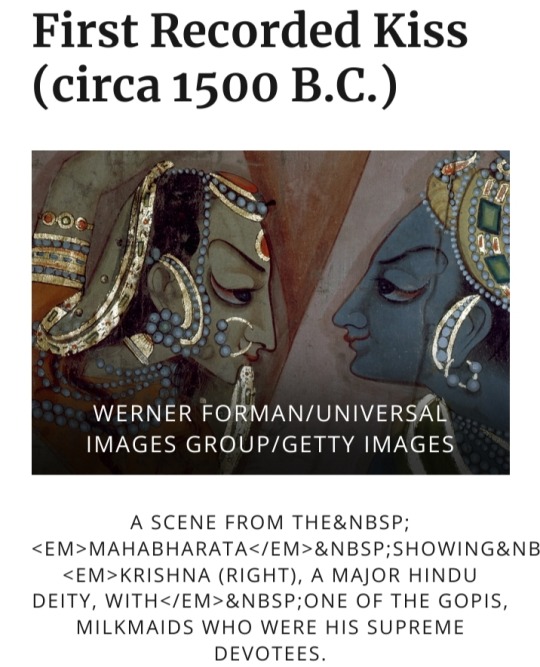
Scholars debate whether kissing began as a trend that spread around the globe, or sprung up organically in different regions.
Whatever the case, the earliest known written mentions of it are in Vedic Sanskrit scriptures circa 1500 B.C., according to research by Vaughn Bryant, an anthropology professor at Texas A&M University.
These scriptures, known as the Vedas, were foundational to the religion of Hinduism.
After that, kissing continued to appear in ancient Indian and Hindu literature.
The Mahabharata, a Sanskrit epic compiled by the 4th century A.D., has a line in which someone “set her mouth to my mouth and made a noise that produced pleasure in me.”
The Kama Sutra, an ancient Sanskrit text on eroticism and love, also has a chapter on kissing that identifies different methods of kissing and types of kisses.

Kissing isn’t just a romantic act. It can also be a sign of friendship or betrayal.
In the Gospels of Matthew and Mark, written circa the 1st century, Judas betrays Jesus by identifying him with a kiss so that armed men can take him away and eventually kill him.
Judas’ kiss has since become a popular storytelling allusion.
It may have inspired the “kiss of death” that appears in mafia literature and film (but was probably never an actual mafia practice).
Perhaps the most famous example is in The Godfather Part II, when Al Pacino’s character gives his brother Fredo the kiss of death for betraying him.

The first people to smooch on film were May Irwin and John C. Rice, who appeared in a short film known variously as May Irwin kiss, Kiss, or The Kiss.
In 1896, the two performers went to Thomas Edison’s studio in New Jersey and reenacted their final kiss scene from a play they were putting on in New York City.
On stage, no one thought the kiss was that sensational. But many felt the close-up footage of them kissing was too risqué.
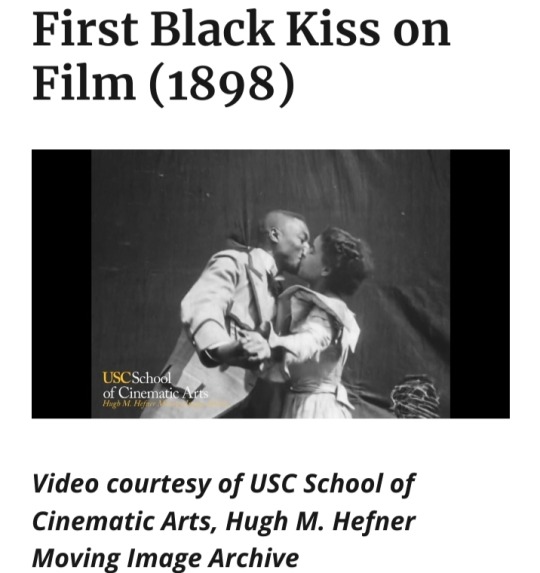
In 1898, black performers Saint Suttle and Gertie Brown starred in a short film titled ''Something Good-Negro Kiss,'' the first film to show Black Americans kissing.
In 2017, film historians rediscovered the footage, which was filmed by a white man named William Selig in Chicago.
“There’s a performance there because they’re dancing with one another, but their kissing has an unmistakable sense of naturalness, pleasure and amusement as well,” Allyson Nadia Field, a professor of cinema and media studies at the University of Chicago who helped identify the film, said in a university press release.
“It is really striking to me, as a historian who works on race and cinema, to think that this kind of artifact could have existed in 1898.”

On the morning of 14 August 1945, patients burst into Greta Zimmer’s Manhattan office claiming the war in Japan was over.
The Austrian immigrant wasn’t sure what to think, so on her lunch break, she went to Times Square in her white dental assistant’s uniform to see what the news ticker said.
The atmosphere there was celebratory. The ticker confirmed that it was indeed V-J Day, and World War II was over.
As Zimmer looked away from the ticker, a Navy sailor named George Mendonsan — who’d started drinking early and mistook Zimmer for a nurse — ran up and aggressively kissed her, leaving his girlfriend behind.
Zimmer struggled to push the stranger off, and they parted ways.
But unbeknownst to both of them, photographers Alfred Eisenstaedt and Victor Jorgensen had each captured the moment, as recounted in The Kissing Sailor: The Mystery Behind The Photo That Ended World War II.
Eisenstaedt’s photo became one of the most iconic WWII images in U.S. history, in part because viewers mistook it for a picture of a Naval officer and nurse celebrating together.
The photo has also stirred controversy, as many people have claimed over the years to be the couple in the image, while others point out that it depicts a nonconsensual moment.
Zimmer said in an interview with the Library of Congress in 2005:
“It wasn’t my choice to be kissed...the guy just came over and kissed or grabbed!”

When William Shatner and Nichelle Nichols kissed on a 1968 episode of Star Trek, it was not technically the first interracial kiss on U.S. television.
But it was the one that seemed to have the most cultural impact.
In the episode, titled “Plato’s Stepchildren,” Captain James Kirk and Officer Nyota Uhura encounter aliens who force them to kiss each other through telekinesis.
In Nichols’ book Beyond Uhura: Star Trek and Other Memories, she recalls that NBC was worried how white Americans would react to the scene, so they asked the actors to film two scenes: one with a kiss and one without a kiss.
However, Nichols and Shatner purposefully messed up all of the kissless takes in order to ensure that NBC aired the kissing scene.

During the Cold War, leaders of communist states often greeted each other with what’s called the “socialist fraternal kiss.”
This could be on the cheek or the mouth, but the most famous example is French photographer Régis Bossu’s 1979 picture of the Soviet Union’s Leonid Brezhnev and East Germany’s Erich Honecker kissing on the mouth.
The kiss occurred when Brezhnev visited East Berlin to celebrate the 30th anniversary of the German Democratic Republic (i.e., East Germany).
When the Berlin Wall came down in 1989, the Soviet artist Dmitri Vrubel recreated the image in a mural on the wall’s east side.
He captioned it: “My God, Help Me to Survive This Deadly Love.”
#Memorable Kisses in History#kiss#history#Vedic Sanskrit scriptures#Vedas#The Mahabharata#The Kama Sutra#Judas#Jesus#May Irwin#John C. Rice#Saint Suttle#Gertie Brown#William Selig#Greta Zimmer#Alfred Eisenstaedt#Victor Jorgensen#V-J Day#World War II#Star Trek#William Shatner#Nichelle Nichols#Socialist Fraternal Kiss#Régis Bossu#Leonid Brezhnev#Erich Honecker#German Democratic Republic#Berlin Wall#Dmitri Vrubel#Judas Kiss
8 notes
·
View notes
Text
I miss when Tumblr was an unknown site for Indians
#I'm tired of finding sanghi bhakts#just saw a guy who's apparently a professor claiming Mahabharata and Ramayana is actually history and not just mythology#like my guy if you're actually a professor of history pls quit 👁️👄👁️#they are so delulu#this is why hinduism is increasingly making me uncomfortable#I can't share a community with these dumbfuvks
4 notes
·
View notes
Text

Arguably the most important person in the epic, and the Mahabharata’s main character
#illustration#art#artwork#digital art#mythology#character art#character design#ancient world#ancient history#ancient india#mahabharata#mahabharat#hinduism#hindublr#hindu mythology#desi tumblr#desi tag#desiblr#the pandava quintet#arjuna
66 notes
·
View notes
Text

#chitra banerjee divakaruni#the palace of illusions#the forest of enchantments#sita ramam#draupadi#mahabharata#history#hindu mythology#hindi literature#ya books#desi dark academia#dark academia#booktok#booklr#bookworm#books & libraries
9 notes
·
View notes
Text
Arjuna's life in the Mahabharata is a journey of skill and transformation. From his early training in archery under Drona to his quest for spiritual knowledge during exile, and finally, his triumph on the battlefield of Kurukshetra, Arjuna's character evolves significantly throughout the epic.
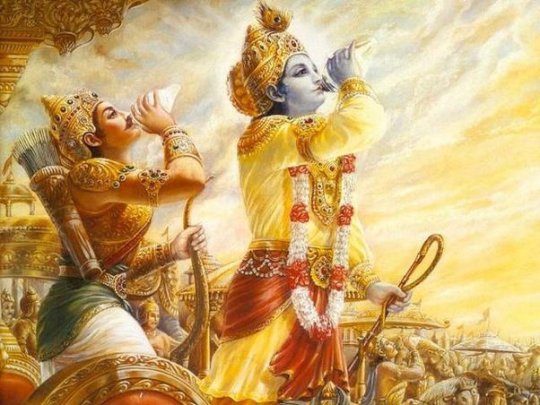
2 notes
·
View notes